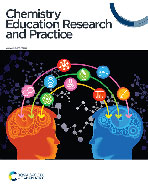The efficacy of instruction in application of mole ratios and submicro- and macro-scopic equivalent forms of the mole within the unit factor method
Abstract
The unit factor method, a generic strategy for solving any proportion-related problem, is known to be effective at reducing cognitive load through unit-cancellation providing step-by-step guidance. However, concerns have been raised that it can be applied mindlessly. This primarily quantitative prepost study investigates the efficacy of instruction aimed at addressing such concerns. This was done by making submicro- and macro-scopic equivalent forms of the mole concept, and the meanings of mole ratios, explicit, and emphasising the application of these within the unit factor method to solve stoichiometry calculations. Data were collected from 161 South African Physical Sciences teachers’ answers to four calculation, and 14 conceptual, questions in each of a pre- and a post-test written at the start and end, respectively, of a two-day workshop at which such instruction was implemented. These data were analysed for changes in strategy type and calculation and conceptual knowledge, i.e., heuristic power. A small (n = 7) group retained deficient calculation strategies in which they failed to recognise the need to apply proportion to the mole ratio. For the remainder, a weak but significant correlation was found between their conceptual and calculation improvements. There was high uptake of the unit factor method in the posttest, although a group (n = 33) which began with relatively good calculation knowledge largely rejected this method. Statistically significant improvements in both conceptual and calculation knowledge were found regardless of the extent of uptake of the unit factor method, however the calculation improvement measured was significantly lower for the group which showed moderate uptake of the unit factor method, suggesting they may have needed a longer intervention. Based on the findings, speculations are made regarding the nature of knowledge and the mechanism of development of heuristic power. Long-term effects of such an intervention would, however, still need to be determined.


 Please wait while we load your content...
Please wait while we load your content...